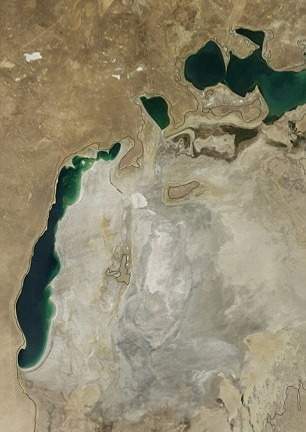In response to a request from the Kazinform agency, Kazhydromet gave a scientific assessment of the statement by Kazakh citizen Altai Ainabek that he was able to cause artificial rain in Mangistau using atmospheric ionization technology.
Altay Aynabek, known on social media as the “Rain Man,” said he wants to restore the Aral Sea using artificial rain technology. He shares his ideas on social media, causing a large number of varied responses. Some users believe that the abnormal precipitation in the cities of Kazakhstan is caused by his technology. However, it remains unclear whether he received the appropriate permits for artificial climate change.
What does the UN say about this?
Kazhydromet has requested a scientific opinion from the World Meteorological Organization regarding the technology of causing rain by ionizing the atmosphere.
– Experts from the World Meteorological Organization, studying the issues of influence on the atmosphere, conducted a study of ionization technology. The report on this study states that “not a single event that is said to be “rain caused by ionization” has been confirmed by either observations or digital modeling by territory,” Kazhydromet said in its response.
The World Meteorological Organization (WMO) is the authorized body of the United Nations that monitors the atmosphere and studies its interaction with the oceans.
– The WMO report on active climate influence states that all technologies designed to increase precipitation can only accelerate natural processes and can only be implemented in certain areas. The International Center of Climate Change Technologies LLC you are talking about uses the ionization method in its work. But at present, the world scientific community does not recognize this technology, – Kazhydromet specialists write.
Rain over the Aral Sea was predicted 10 days in advance

– In the period from June to July of this year, there were no changes in any part of Kazakhstan that went beyond the climatic features. No deviations were registered in the interaction of baric structures and the formation of cloud systems, precipitation. The amount of precipitation in June and July was within the average long-term norm or lower, – Kazhydromet notes.
Forecasters’ analyses show that cyclonic activity prevailed in Kazakhstan in June-July 2024.
– In May (4-8, 13-14, 16-22, 24-25 May) as a result of frequent passage of the South Caspian and Southern cyclones across the territory of the Kyzylorda region, precipitation of up to 0.1-12 mm was recorded. On the night of May 5, rain with an intensity of 19-27 mm was recorded in the regional center. In June, due to the influence of the Southern and Atlantic cyclones, 0.1 to 4 mm of precipitation fell on June 6-9 and 22-30. In July (01-22 July), the territory of the region was under the influence of a slowly moving Southern cyclone. As a result, 0.1 to 13 mm of precipitation fell on July 6, 08 and 10-20. Taking into account the above, it should be noted that the precipitation that fell in the Kyzylorda region and the city of Kyzylorda was associated with natural synoptic conditions and was predicted with an accuracy of up to 10 days, the forecasters write.
From the response of Kazhydromet it follows that the water level in the Northern Aral Sea increased this summer not due to rains, but due to water that arrived from the Shardara River.
– According to the data recorded at the hydrographic post near the village of Karateren, this year 1 billion 138 million cubic meters of water entered the Northern Aral Sea from the Syr Darya River in the first half of the year. This is 33% less than the long-term data. At the said post, there is a tendency for the annual water volume to decrease according to long-term data. As for the water level in the Northern Aral Sea, in June the average level was 4,118 cm. This is 4 centimeters lower than in June last year, 93 centimeters lower than the long-term value, – the response says.
It is impossible to artificially induce rain over the Aral Sea – Kazhydromet
Kazhydromet specialists say that it is impossible to produce artificial rain from the atmosphere of arid territories such as the Aral region.

– The Aral Sea region is considered an arid and moisture-deficient zone, characterized by a continental climate. The annual precipitation level is about 100-130 mm, the annual evaporation level is tens of times higher, or 1,250-1,450 mm. This, in turn, limits the possibilities of providing a large territory with water resources due to precipitation. Since atmospheric processes are very complex, an appropriate climatic potential is needed to artificially increase the volume of precipitation. In the Aral Sea region, this potential is low. According to studies conducted by Kazakh meteorologists, only in the northern regions of the country is there sufficient potential to increase the level of precipitation due to cloud water reserves. In other regions, these indicators are insufficient. These data are given in the monograph of Professor, Doctor of Geographical Sciences A.V. Cherednichenko “Climate Change in Kazakhstan and Adaptation Possibilities Due to Available Cloud Water Reserves” (Monograph. Bishkek: Ilim, 2009. – 260 p.). Experimental studies conducted in Russia and the United States have proven that the capabilities of modern technologies increase the level of natural precipitation by only 10-15%, the Kazhydromet report states.
In addition, the authors of the response recall that Uzbekistan agreed to supply 3.7 billion cubic meters of water to Kazakhstan via the Syr Darya.
According to official data, since April 1, Uzbekistan has supplied 3.9 billion cubic meters of water to Kazakhstan via the Syr Darya River. 3.6 billion cubic meters of water have been released from the reservoir into the lower reaches of the Syr Darya. This is 950 million cubic meters more than last year. As a result, 700 million cubic meters of water entered the Kyzylkum Canal, and 400 million cubic meters of water entered the Northern Aral.
Earlier, the artificial rain technology of Altai Ainabek was commented on by the Ministry of Agriculture of the Republic of Kazakhstan. Vice Minister of Agriculture of the Republic of Kazakhstan Azat Sultanova, such a project has already been proposed by foreigners, and this approach still requires comprehensive study.
“We worked together with the Ministry of Ecology. But today we have neither a scientific conclusion nor any experience. Therefore, it is difficult to say anything specific. Subsidizing such a project does not fall under any law,” added Azat Sultanov.
Minister of Ecology and Natural Resources Erlan Nysanbayev also expressed his opinion about the Rain Man project. According to him, both scientists and organizations dealing with this problem around the world are skeptical about the ionization method. This is an unproven, unfounded approach.
https://www.inform.kz/ru/povisil-li-altay-aynabek-uroven-vodi-v-arale-zaklyuchenie-kazgidrometa-55a7e6#:~:text=%D0%98%D0%B7%20%D0%BE%D1%82%D0%B2%D0%B5%D1%82%D0%B0%20%C2%AB%D0%9A%D0%B0%D0%B7%D0%B3%D0%B8%D0%B4%D1%80%D0%BE%D0%BC%D0%B5%D1%82%C2%BB%20%D1%81%D0%BB%D0%B5%D0%B4%D1%83%D0%B5%D1%82%2C,%D0%B2%D0%BE%D0%B4%D1%8B%2C%20%D0%BF%D1%80%D0%B8%D0%B1%D1%8B%D0%B2%D1%88%D0%B5%D0%B9%20%D0%B8%D0%B7%20%D1%80%D0%B5%D0%BA%D0%B8%20%D0%A8%D0%B0%D1%80%D0%B4%D0%B0%D1%80%D0%B0.



